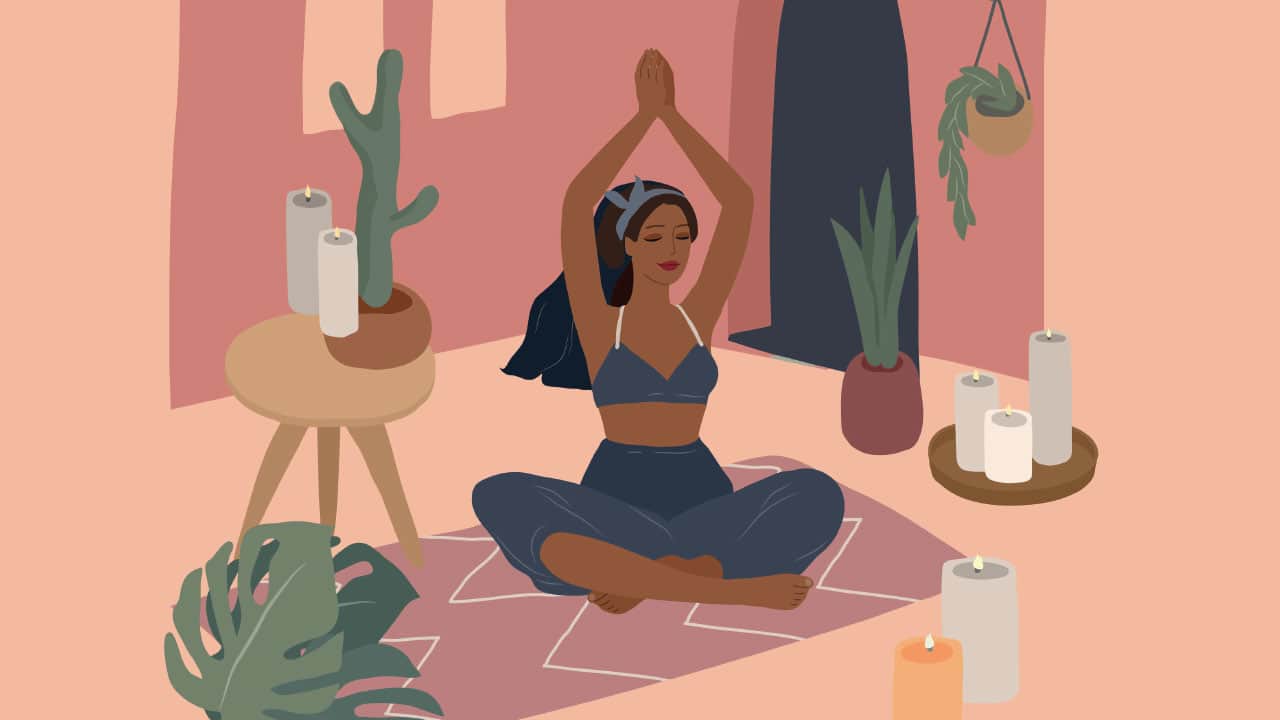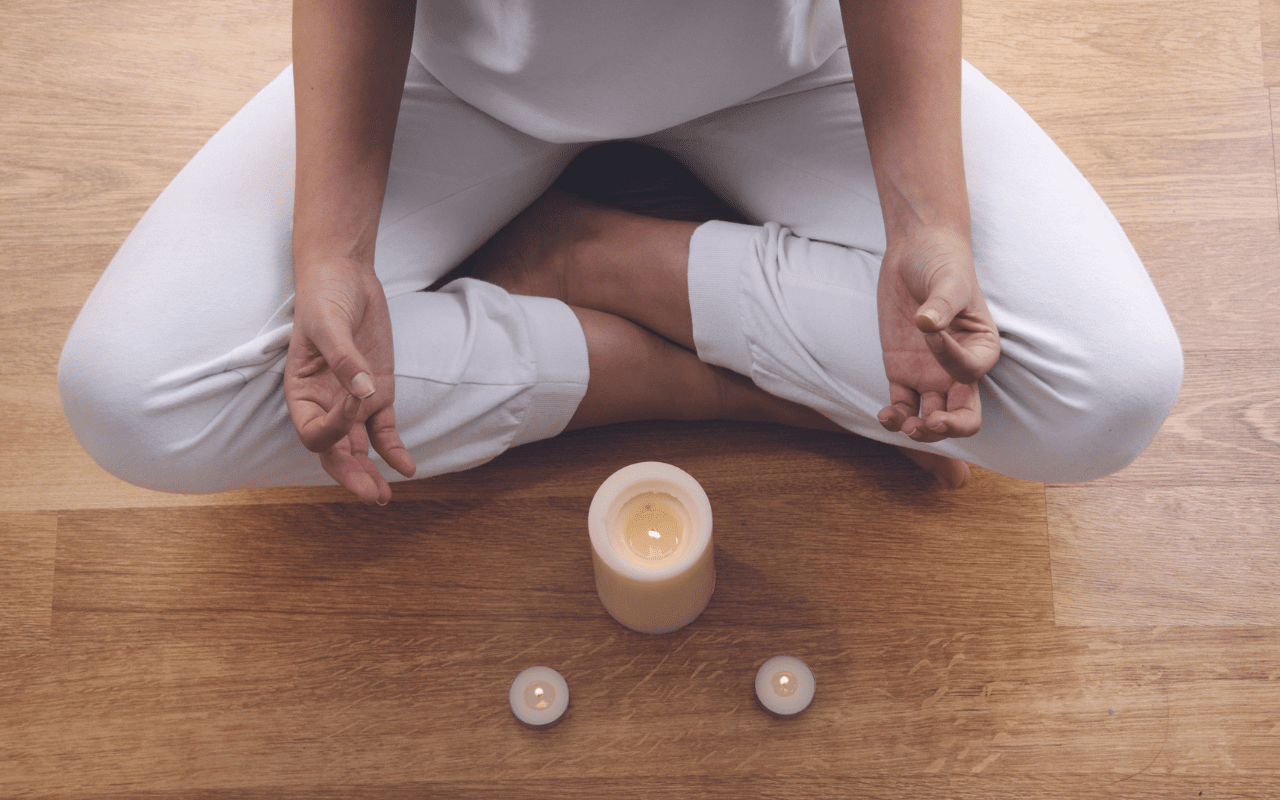
Look into the light
Trataka and Ceromancy are two ancient candle practices that can easily be combined. By Diane Ashfield
There’s something quite symbolic and magical about lighting a candle. Whether it’s to adorn a birthday cake, create a romantic atmosphere or in remembrance of someone special we have lost, candlelight can be spellbinding as well as providing ambience and light to our homes.
The yoga concentration practice, Trataka, which means ‘gaze steadily’, involves the continuous staring into a flame which not only brings our minds to a quieter place, but it is said to be a therapeutic practice to help relieve anxiety, headaches, depression, poor memory and insomnia by balancing the nervous system. Trataka improves our eye function, increases our awareness, focus and concentration and is also said to activate the Ajna chakra – our Third Eye.
The Hatha Yoga Pradipika, an ancient yoga manual compiled around 600 years ago, mentions Trataka in Chapter 2, Verse 32: “Trataka eradicates all eye diseases, fatigue and sloth and closes the doorway creating these problems. It should be carefully kept secret like a golden casket.”
I’ve often used Trataka as a concentration practice in my Zoom yoga classes, mainly because most gyms and halls have smoke detectors, banning the use of naked flames. I prefer to use a stout candle or votive, although tea-lights are fine too if that’s all you have to hand. Avoid using scented candles if possible, as this awakens our sense of smell, which you may find distracting. Remember to use the utmost care when working with candles and always have a small bowl of water beside your candle for extra safety.
Candle meditation
Place your candle on a flat, level surface at eye level if possible, away from draughts and ensuring that there are no pets or children in the vicinity. Turn off your phone, making sure you are free from any distractions and make yourself as comfortable as possible, sitting with cushions, with your back against a wall if that feels more comfortable or on a chair. Wherever you are, feel that your spine is tall and your shoulders are relaxed. Light
your candle, ensuring that it is far enough away from you so that your breath doesn’t make the flame flicker, and then close your eyes. Take a few, deep breaths, and with each out breath relaxing the body, especially the eyes.
Open your eyes and fix your gaze upon your candle flame. Keep your gaze as steady as you can and if possible, avoid blinking or moving the eyeballs, bringing your total focus and awareness towards the flame. Should any thoughts develop, gently bring the mind back to the fixed point of your flame and become totally absorbed by its light. What colours do you see? Is it brighter at the top or the bottom? Become completely transfixed by your flame so that you are totally unaware of anything else.
After a few minutes, or if the eyes feel tired or begin to water, gently close your eyes and become aware of the after-image imprinted on the inside of your eyelids. Stabilise this image if possible, bringing it into the centre of your focus. Once you have lost this image, slowly and gently open your eyes and blink a few times. Rub your hands together to generate heat, then place one hand over each eye with the heels of the hands resting just underneath the eyes to soothe and relax.

Ceromancy practice
Another ancient practice using candles is Ceromancy. This is a form of divination used as far back as the Celts and Druids and could possibly have been introduced to Britain by the Romans. Ceromancy involves melting wax, pouring it into a bowl of cold water and interpreting the shapes formed by the wax as it sets and hardens to predict the future.
After performing Trataka, and you feel there is sufficient wax melted by your candle, extinguish the flame, make a wish (naturally, or perhaps you would like to ask a question), and carefully pour the melted wax into a bowl of cold water, in one continuous pour. Leave for a minute or two for the wax to cool and set, then you will be able to examine your blob of wax to determine what it resembles. Inspect your shape from all angles, but handle it with care as small fragments have the tendency to break off!
There is no right or wrong way to interpret your melted wax shape. Use your intuition first – for example, if it looks like an owl this could represent wisdom, predicting a period of study or higher education. Otherwise, there are lots of online resources to help you provide meanings to your shape, plus you could also use the same definitions used in Tasseomancy – tea-leaf reading. The last time I practiced Ceromancy, my blob of wax resembled The Starship Enterprise, which I interpreted as the universe urging me to “Boldly Go…..!”
It’s best not to take Ceromancy too seriously and just have fun with it, however please be extremely careful with naked flames and never leave a candle unattended once lit.
Diane Ashfield (aka Yoga With Dash) is a certified BWY instructor currently hosting weekly classes on Zoom and in-person classes in Bromley, Kent. Connect with her at: dianeashfield@yahoo.com


